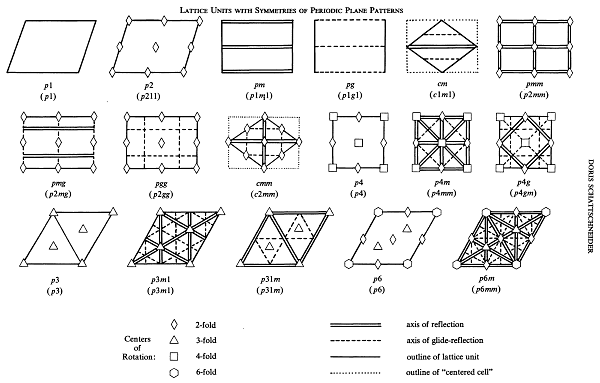As a pattern junkie, you may know how to capture the structure of a repeating pattern in a diagram; that is, determine to which of the seventeen symmetry types a pattern belongs. Yes, we are talking about surface patterns, or wallpaper patterns, whose type is determined by what mathematicians call the plane (2D) symmetry groups. Turns out all pattern schematics are not made equal and, surprisingly, the most simple diagram, which is also the most useful for the non-mathematically inclined, is also the least known or, we might even be tempted to say, a well-kept secret.
Traditionally, because you are dealing with symmetries, your pattern schematics would show symmetry operations, probably combined with boundaries of repeating units (“unit cells” or “fundamental domains”), and often made more intelligible by superimposing actual patterns produced by a simple asymmetric bit (a line, a comma, or a letter of an alphabet). Here are a few examples of the standard approach, which we show mostly to help you fully appreciate a simpler one that’s coming up next:

Continue reading The Simplest Diagram of the 17 Symmetry Types, Ever
Last updated: September 3, 2017


